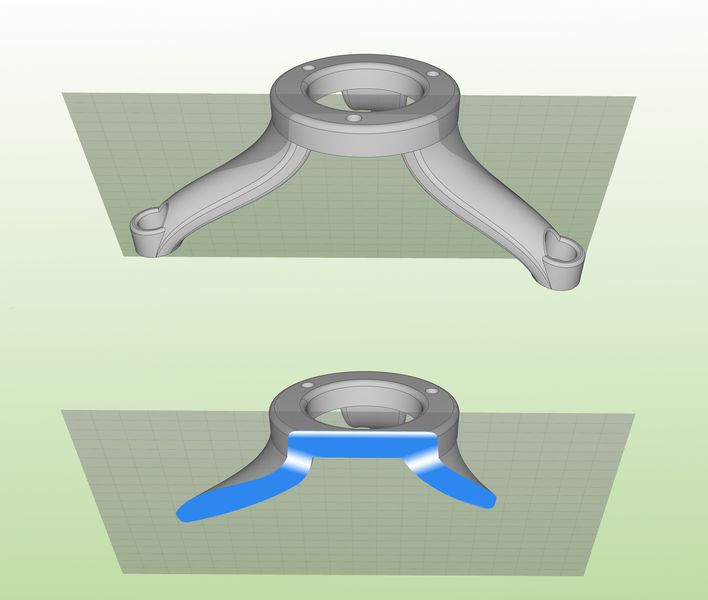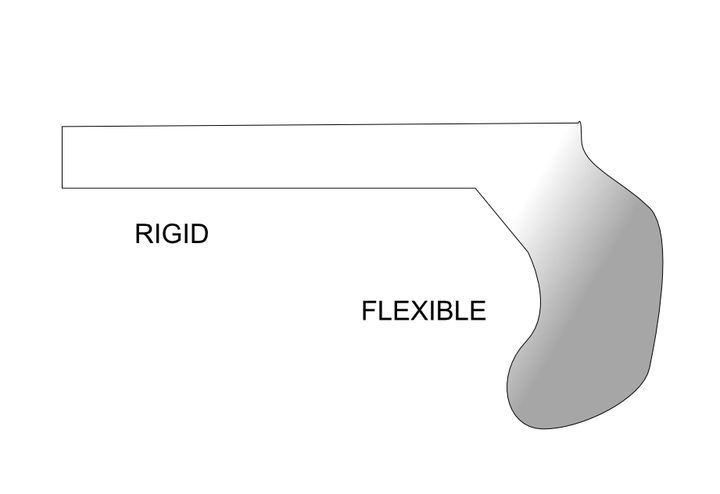
Fraunhofer IGD has developed a new type of software for 3D printing that enables use of gradient-style materials.
Material Gradients In 3D Printing
The concept of gradient materials is not well known because there have been, up to now, really no practical means of achieving them. But if they were possible, many very interesting things could occur.
The idea of a material gradient is analogous to a color gradient one might see in a graphics design program: colors slowly blend from one side to another. In the materials world, this would mean different types of material gradually blend from one volume to another.
This is not something you could visually see, as the materials are on the interior of a part and are thus obscured. While you can’t see the blend itself, the purpose of a material gradient is not visual; it’s functional.

Imagine a part that requires strength on one portion, but flexibility on another. A material gradient could be defined that would place rigid material where strength is required, but gradually ease off toward the flexible section by increasing the ratio of flexible material.
This approach could integrate well with a FEA system, which could provide input into where the optimal placements for such gradients would be in a given part.
However, there’s been a bit of a problem with this idea: there really hasn’t been any proper software that can account for material gradients.
GraMMaCAD Software
Now, researchers at the Fraunhofer Institute for Computer Graphics Research have developed new software they call “GraMMaCAD”. They explain the issue:
“Providing CAD models with locally varying properties is difficult and time-consuming for designers, constructors and 3D printing service providers today.
Common practice is either to divide the model into partial models, to which different materials are then assigned, or to use images (textures) to assign materials in a preparation step for 3D printing. The former usually only allows discrete material transitions, while the second method has to generate the grading as a variation of the texture information.
The challenges are to generate, simply and quickly, continuous material gradients that follow the geometry, as they can be produced with modern multi-material printers.”
The new GraMMaCAD software is able to handle material gradients in an “intuitive” manner on any CAD model. They are able to add material gradients to surfaces, bodies and are based on auxiliary geometries. Apparently the GraMMaCAD software directly works with common CAD file formats, including STEP, IGES, SOLIDWORKS, etc.
Implications Of Gradient Materials In 3D Printing
This is a major step forward, as this breaks down one of the major barriers to the use of gradient materials in 3D printing. However, several more steps must be taken.
First, this software appears to be handling the CAD part of the equation only. For 3D printing to be achieved, one must translate the CAD model into GCODE, typically done by slicing software.
As far as I know, there are no commonly available slicing software systems that can handle material gradients. There is a good reason for this.
That reason is that there are very few 3D printers technically capable of physically 3D printing gradients.
Stratasys’ PolyJet system could do so, as their inkjet-style deposition of liquid resin is well known for its ability to mix materials — that’s how they generate the color scheme for their full color Pantone-certified color 3D prints on machines like the new J55.
Stratasys’ earlier models were able to 3D print hard and soft materials within the same 3D print job, but the control over them was restricted as Fraunhofer explains above.
Another player might be Mimaki, which produces a similar line of full color 3D printers. But again, these are color variations, not necessarily functional material variations. It may be that companies such as these have to adapt their equipment and software drivers somewhat to handle gradient effects.
Once all of these are in place, we may find ourselves in a world where highly advanced 3D prints using gradients can be achieved. The parts produced using this approach would be quite different from today’s typical mono-material parts, and may even be simpler as fewer parts may be required in an assembly.
Via Fraunhofer IGD (German) (Hat tip to Benjamin)
